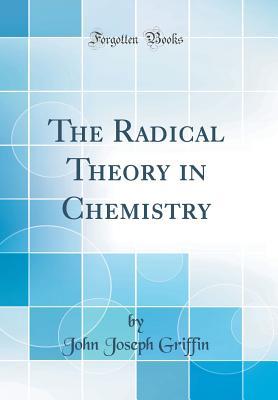Read The Radical Theory in Chemistry (Classic Reprint) - John Joseph Griffin | ePub
Related searches:
3486 4097 3082 4878 3556 1345 1268 322 1364 1013 1751 3470 1457 3525
Radical, also called free radical, in chemistry, molecule that contains at least one unpaired electron. Most molecules contain even numbers of electrons, and the covalent chemical bonds holding the atoms together within a molecule normally consist of pairs of electrons jointly shared by the atoms linked by the bond.
Radicals are intermediates in many chemical reactions, more so than is apparent from the balanced equations. Radicals are important in combustion, atmospheric chemistry, polymerization, plasma chemistry, biochemistry, and many other chemical processes. A large fraction of natural products is generated by radical-generating enzymes.
Aging: a theory based on free radical and radiation chemistry, journal of gerontology, volume 11, issue 3, 1 july 1956,.
Radical expression involving roots, also known as an nth root; radical symbol (√), used to indicate the square root and other roots; radical of an algebraic group, a concept in algebraic group theory; radical of an ideal, an important concept in abstract algebra; radical of a ring, an ideal of bad elements of a ring.
Exercise 1 suggest a reason that hexaphenylmethane is not stable. According to vsepr theory carbocations, r3c+, should be trigonal.
Years, there has been a great deal of attention toward the field of free radical chemistry.
Organic chemistry possesses its own'elements, which sometimes play the part of cl or 0, sometimes that of a metal.
May 27, 2016 free radicals are the natural byproducts of chemical processes, such as the free radical theory of aging states that we age because of free.
A free radical is an atom or a group of atoms with an odd number of electrons. The odd, unpaired electron in a free radical seeks to pair (form a bond) with another electron. Most free radicals are so reactive they exist only for a fleeting moment.
Radical theory of hydride atomization confirmed after four decades – determination of h radicals in a quartz hydride atomizer by two-photon.
Radicals are intermediates in many chemical reactions, more so than is apparent from the balanced equations. Radicals are important in combustion, atmospheric chemistry, polymerization, plasma chemistry, biochemistry, and many other chemical processes. A majority of natural products are generated by radical-generating enzymes.
Like most radical reactions, sulfur-centered radicals and their reactions usually demand relatively high levels of theory for chemical accuracy, typically dispersion-corrected density functional theory methods for geometry optimizations and high-level composite ab initio methods such as g3 (mp2)-rad or cbs-qb3 for improved energies, as well as appropriate treatment of solvation, conformational searching, and averaging.
Work by wöhler and liebig on benzaldehyde inspired a general theory of organic chemistry focusing on so-called radicals, collections of atoms which.
Jan 27, 2016 to understand the effect of chemical radicals on dna base pairs, we radical to the gc and at base pairs, by the density functional theory.
In chemistry, a radical (more precisely, a free radical) is an atom, molecule, or ion that has unpaired valence electrons or an open electron shell, and therefore may be seen as having one or more dangling covalent bonds.
Full text of the radical theory in chemistry see other formats.
Theories of this character, which demonstrate the essential unity of the whole science of chemistry, have.
Web; books; video; audio; software; images; toggle navigation.
Dec 9, 2013 a summary of key free radical topics including examples of radical reactions, radical stability, mechanisms, selectivity, allylic halogenation.
In chemistry, when a mixture is heated, all reaction speeds are increased. This is not if you think about the initiation step only needs to occur once in theory.
A radical (often, but unnecessarily called a free radical) is an atom or group of atoms a prominent feature of radicals is that they have extremely high chemical.
In chemistry, radicals (often referred to as free radicals) are atomic or molecular species with unpaired electrons on an otherwise open shell configuration.
Sep 18, 2009 freshman organic chemistry (chem 125)work by wöhler and liebig on benzaldehyde inspired a general theory of organic chemistry focusing.
The calculation results manifest the applicability of awg-rf fields to reaction control (reaction.
A consistent theory of ammoniums and amidogens, and of the salts which are formed by those radicals. A theory of anhydrides, explanatory of the constitution of those salts in which both radicals are acid radicals.

Post Your Comments: